8 Respect for Diversity
Nghi D. Thai and Ashlee Lien
Chapter Eight Objectives
By the end of this chapter, you will be able to:
- Understand cultural humility as an approach to diversity
- Identify and define dimensions of diversity
- Appreciate the complexity of identity
- Identify important cultural considerations for working within diverse communities
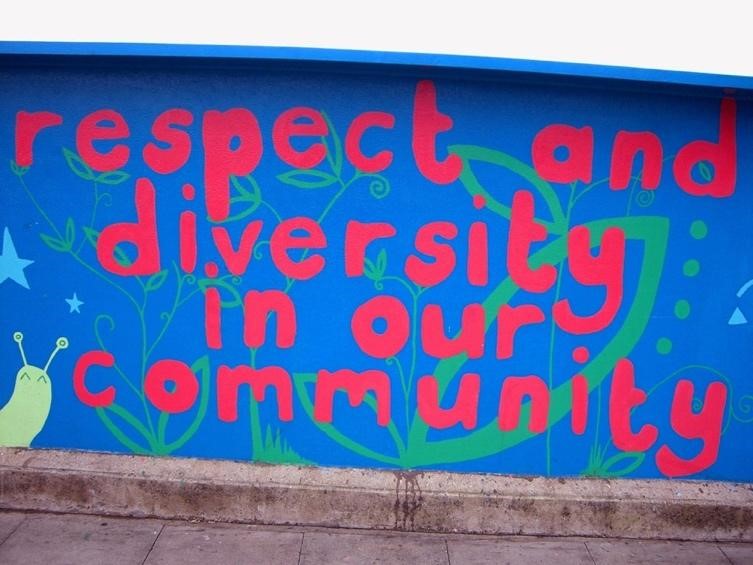
Respect for diversity has been established as a core value for Community Psychology, as indicated in Chapter 1 (Jason et al., 2019). Appreciating diversity in communities includes understanding dimensions of diversity and how to work within diverse community contexts, but also includes a consideration of how to work within systems of inequality. Community psychologists must be mindful of diverse perspectives and experiences when conducting research and designing interventions, as well as working to combat oppression and promote justice and equality. By working within a framework of cultural humility, this chapter attempts to provide a basic understanding of the dimensions of diversity that are most common in Community Psychology research and practice. Further, we explore how these dimensions contribute to complex identities and considerations for community practice.
CULTURAL HUMILITY

As our world becomes increasingly diverse and interconnected, understanding different cultures becomes crucial. Without a basic understanding of the beliefs and experiences of individuals, professionals can unintentionally contribute to prejudice and discrimination or negatively impact professional relationships and effectiveness of services. To understand cultural experiences, it is important to consider the context of social identity, history, and individual and community experiences with prejudice and discrimination. It is also important to acknowledge that our understanding of cultural differences evolves through an ongoing learning process (Tervalon & Murray-Garcia, 1998).

Cultural competence is generally defined as possessing the skills and knowledge of a culture in order to effectively work with individual members of the culture. This definition includes an appreciation of cultural differences and the ability to effectively work with individuals. The assumption that any individual can gain enough knowledge or competence to understand the experiences of members of any culture, however, is problematic. Gaining expertise in cultural competence as traditionally defined seems unattainable, as it involves the need for knowledge and mastery. Instead, true cultural competence requires engaging in an ongoing process of learning about the experiences of other cultures (Tervalon & Murray-Garcia, 1998). Further reading on cultural competence by Stanley Sue can be found here.
Cultural humility is the ability to remain open to learning about other cultures while acknowledging one’s own lack of competence and recognizing power dynamics that impact the relationship. Within cultural humility it is important to engage in continuous self-reflection, recognize the impact of power dynamics on individuals and communities, embrace “not knowing”, and commit to lifelong learning. This approach to diversity encourages a curious spirit and the ability to openly engage with others in the process of learning about a different culture. As a result, it is important to address power imbalances and develop meaningful relationships with community members in order to create positive change. A guide to cultural humility is offered by Culturally Connected.
DIMENSIONS OF DIVERSITY
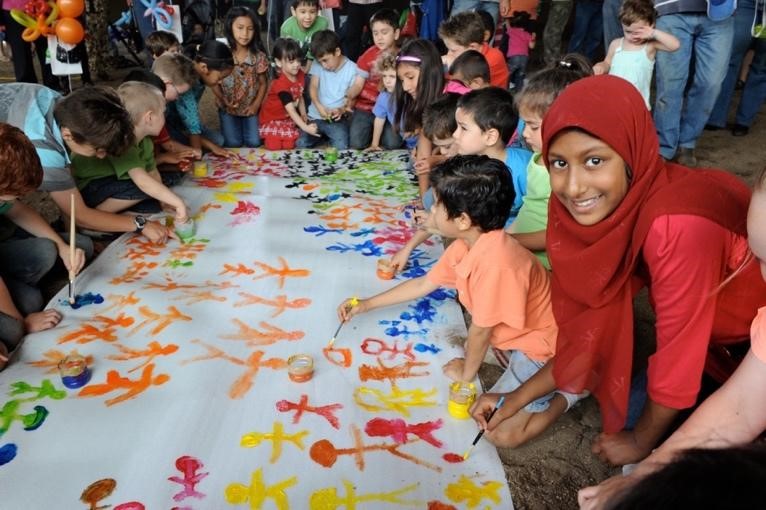
The recognition and appreciation of diversity is a core principle for the field of Community Psychology. Although it is impossible to discuss all of the dimensions of human diversity in this section, we present some common dimensions examined in Community Psychology research and action and point toward where our field could place more emphasis. We also acknowledge the importance of intersectionality, which will be touched upon throughout this chapter, and the process of cultural humility in understanding diversity.
Culture
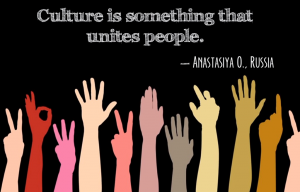
Culture is an important dimension of diversity for community psychologists to examine. In general, culture has been challenging to define, with modern definitions viewing culture as a dynamic concept that changes both individuals and societies together over time. Further, culture in today’s society refers to more than just cultural and ethnic groups but also includes racial groups, religious groups, sexual minority groups, socioeconomic groups, nation-states, and corporations. While numerous definitions for culture are available, there are key defining components, such as shared meanings and shared experiences by individuals in a group that are passed down over time with each generation. That is, cultures have shared beliefs, values, practices, definitions, and other elements that are expressed through family socialization, formal schooling, shared language, social roles, and norms for feeling, thinking, and acting (Cohen, 2009).
Using a Community Psychology approach, culture can be examined at multiple ecological levels to understand its impact. This means that culture can influence the norms and practices of individuals, families, organizations, local communities, and the broader society. For example, cultural influences can have an impact on how members function and interact with one another. Further, culture should be understood within a broader context of power relationships, and how power is used and distributed (Trickett, 2011).
Race
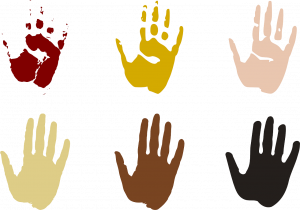
While physical differences often are used to define race, in general, there is no consensus for this term. Typically, race has been defined using observable physical or biological criteria, such as skin color, hair color or texture, facial features, etc. However, these biological assumptions of race have been determined to be inaccurate and harmful by biologists, anthropologists, psychologists, and other scientists. Research has proven no biological foundations to race and that human racial groups are more alike than different; in fact, most genetic variation exists within racial groups rather than between groups. Therefore, racial differences in areas such as academics or intelligence are not based on biological differences but are instead related to economic, historical, and social factors (Betancourt & Lopez, 1993).
Instead, race has been socially constructed and has different social and psychological meanings in many societies (Betancourt & Lopez, 1993). In the US, people of color experience more racial prejudice and discrimination than white people. The meanings and definitions of race have also changed over time and are often driven by policies and laws (e.g., one drop rule or laws).
Case Study 8.1
Is Race a Selected Identity?
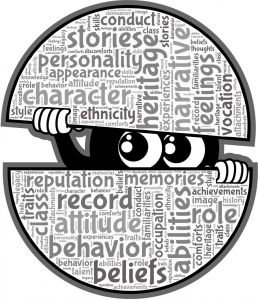
Rachel Dolezal, also known as Nkechi Amare Diallo, was born to white parents with no known African ancestry. As a young adult, she became involved in civil rights, became a college instructor of Africana Studies, and began self-identifying as a black woman. She even became president of the Spokane, Washington chapter of the National Association for the Advancement of Colored People (NAACP). She resigned from her position with the NAACP and was dismissed from her role as an instructor after information surfaced casting doubt upon her racial heritage. She later acknowledged that she was born to white parents but continued to insist that she strongly identifies as a black woman. Read more here.
Ethnicity

Ethnicity refers to one’s social identity based on the culture of origin, ancestry, or affiliation with a cultural group (Pinderhughes, 1989). Ethnicity is not the same as nationality, which is a person’s status of belonging to a specific nation by birth or citizenship (e.g., an individual can be of Japanese ethnicity but British nationality because they were born in the United Kingdom). Ethnicity is defined by aspects of subjective culture such as customs, language, and social ties (Resnicow et al., 1999).
While ethnic groups are combined into broad categories for research or demographic purposes in the US, there are many ethnicities among the ones you may be familiar with. Latina/o/x or Hispanic may refer to persons of Mexican, Puerto Rican, Cuban, Spanish, Dominican, or many other ancestries. Asian Americans have roots from over 20 countries in Asia and India, with the six largest Asian ethnic subgroups in the US being the Chinese, Asian Indians, Filipinos, Vietnamese, Koreans, and Japanese (read more here).
Gender
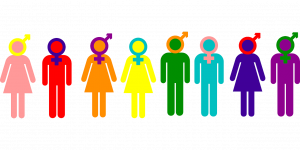
Gender refers to the socially constructed perceptions of what it means to be male or female in our society and how those genders may be reflected and interpreted by society. Gender is different from sex, which is a biological descriptor involving chromosomes and internal/external reproductive organs. As a socially constructed concept, gender has magnified the perceived differences between females and males leading to limitations in attitudes, roles, and how social institutions are organized. For example, how do gender norms influence types of jobs viewed as appropriate or not appropriate for women or men? How are household or parenting responsibilities divided between men and women?
Gender is not just a demographic category but also influences gender norms, the distribution of power and resources, access to opportunities, and other important processes (Bond, 1999). For those who live outside of these traditional expectations for gender, the experience can be challenging. In general, the binary categories for sex, gender, gender identity, and so forth have received the most attention from both society and the research community, with only more attention to other gender identities (e.g., gender-neutral, transgender, nonbinary, and GenderQueer) in recent years (Kosciw et al., 2015).
But the attention to other gender identities is increasing, both academically and publicly. One example is the case of Nicole Maines challenging her elementary school’s restroom policy, which resulted in a victory when the Maine Supreme Judicial Court ruled that she had been excluded from the restroom because of her transgender identity. While community psychologists are making efforts to conduct more research on the various gender identities on the gender spectrum, more research needs to continue in this area.
Age

Community Psychology’s emphasis on context has also included aging, or the developmental changes and transitions that come with being a child, adolescent, or adult. Power dynamics, relationships, physical and psychological health concerns, community participation, life satisfaction, and so forth can all vary for these different age groups (Cheng & Heller, 2009). Although the field has started to include aging issues in research, Cheng and Heller (2009) searched for publications on older adults in major Community Psychology journals and found that this segment of the population has been neglected. Although the skills, values, and training of community psychologists would likely make a difference in the lives of older adults, the attitudes within our profession and society are current barriers.
Social Class

Like the other components of diversity, social class is socially constructed and can affect our choices and opportunities. This dimension can include a person’s income or material wealth, educational status, and/or occupational status. It can include assumptions about where a person belongs in society and indicate differences in power, privilege, economic opportunities and resources, and social capital. Social class and culture can also shape a person’s worldview or understanding of the world; influencing how they feel, act, and fit in; and impacting the types of schools they attend, access to health care, or jobs they work at throughout life. The differences in norms, values, and practices between lower and upper social classes can also have impacts on well-being and health outcomes (Cohen, 2009). Social class and its intersection with other components of one’s identity are important for community psychologists to understand. Unnatural Causes: Is Inequality Making Us Sick? is a seven-part documentary that focuses on the connection between social class, racism, and health.
Sexual Orientation

Sexual orientation refers to a person’s emotional, romantic, erotic, and spiritual attractions toward another in relation to their own sex or gender. The definition focuses on feelings rather than behaviors since individuals who identify with a minority sexual orientation experience significant stigma and oppression in our society (Flanders et al., 2016). Sexual orientation exists on a continuum or multiple continuums and crosses all dimensions of diversity (e.g., race, ethnicity, social class, ability, religion, etc.). Sexual orientation is different from gender identity or gender expression. Over time, gay, lesbian, asexual, and bisexual identities have extended to other sexual orientations such as pansexual, polysexual, and fluid, and increasingly more research is being conducted on these populations within the field of Community Psychology (Kosciw et al., 2015). As a historically marginalized and oppressed group with inadequate representation in the literature, sexual minority groups face a variety of problems and issues that necessitate further research. The empowering and participatory approaches and methods used in Community Psychology can be beneficial for research with sexual minority groups.
Ability/Disability

Disabilities refer to visible or hidden and temporary or permanent conditions that provide barriers or challenges, and impact individuals of every age and social group. Traditional views of disability follow a medical model, primarily explaining diagnoses and treatment models from a pathological perspective (Goodley & Lawthom, 2010). In this traditional approach, individuals diagnosed with a disability are often discussed as objects of study instead of complex individuals impacted by their environment. Community Psychology, however, follows a social model of ability in which diagnoses are viewed from a social and environmental perspective and consider multiple ecological levels. The experiences of individuals are strongly valued, and community-based participatory research is a valuable way to explore experiences while empowering members of a community with varying levels of ability/disability. Learn more by watching the Employment Choice for People with Severe Physical Disabilities video.
Culture must be considered when viewing ability from a social perspective (Goodley & Lawthom, 2000), and may impact whether or not certain behaviors are considered sufficient for inclusion in a diagnosis. For example, cultural differences in the assessment of “typical” development have impacted the diagnosis of Autism Spectrum Disorders in different countries. Further, diagnoses or symptoms can be culturally-specific, and culture may influence how symptoms are communicated. The experience of culture can significantly impact lived experience for individuals diagnosed with a disability.
It is important to consider how intersectionality impacts the experience of disability. For example, students of color and other underserved groups have a higher rate of diagnosis of learning disabilities, emotional and behavioral disabilities, and intellectual disabilities (Artiles et al., 2010), which may be due to economic, historical, and social factors. Diagnosis must be considered as disabled youth are at a disadvantage in a number of indicators of educational performance, leading to more substantial disparities later in life.
How one identifies individuals with a particular label indicating their race, gender or sexuality is rather complicated, and unless investigators are careful in their definitions of these terms, many problems can be encountered, as has been reviewed above. Identifying who has a disability or health condition can also be a challenge and can have real, tangible consequences for an affected group. As an example, if prevalence research suggests that a particular disability or health condition is relatively rare, it is possible that few federal and state resources will be devoted to those individuals. But if the methodology for selecting individuals is flawed, then the prevalence rates will be inaccurate and potentially biased. This is what occurred with the health condition known as chronic fatigue syndrome, now also known as myalgic encephalomyelitis, as indicated in Case Study 8.2.
Case Study 8.2
How Flawed Research Can Lead to More Stigma
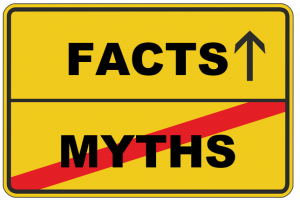
When the Centers for Disease Control tried to estimate the prevalence of those with this illness, they concluded that only about 20,000 people had this condition in the US, and most with this illness tended to be white, middle-class women, which is what led to the stigmatizing label “Yuppie Flu disease.” However, the way the investigators conducted this research was flawed; they asked health care personnel to identify individuals with this illness, but as many health care professionals did not believe that this was a real or legitimate, they tended to refer few individuals to the study. In addition, as many individuals with a chronic health condition do not have access to the healthcare system, many individuals with this illness were not able to be brought into the prevalence study. However, when a group of community psychologists used better research methods that involved deriving their sample from randomly contacting people in the community, without depending on referrals from physicians, they estimated that about a million individuals had ME/CFS. In addition, those identified tended to be from lower socioeconomic status groups and communities of color (just the opposite of what led to the characterization of Yuppie Flu) (Jason et al., 1999). The findings from this study were widely disseminated and led to reductions in some of the bias and stigmatization that has been directed to those with this illness.
The impact of disability on identity and intersection with other social identities is important for community psychologists to understand. Community Psychology’s unique perspective has contributed to applied research conducted among communities and individuals with disabilities. The need for understanding, empowerment, and advocacy through participatory action research continues to exist for individuals with disabilities.
Religion & Spirituality

There are many definitions of religion, most of which typically include shared systems of beliefs and values, symbols, feelings, actions, experiences, and a source of community unity (Cohen, 2009). Religion emphasizes beliefs and practices, relationships with the divine, and faith, all of which differentiate it from common definitions of culture. Further, religion is an important predictor for well-being, satisfaction, and other life outcomes (Tarakeshwar et al., 2003). While religion has been neglected in psychological research, it has been included in Community Psychology’s conceptualization of diversity since the beginning of the field.
Religion and spirituality were formerly considered a joint concept but have been differentiated in the past century. Definitions of spirituality typically focus on relationships with a higher power and a quest for meaning. The differentiation between religion and spirituality has become more relevant recently as many individuals consider themselves more spiritual than they are religious. Community Psychology has long considered religion as a dimension of diversity, but the importance of spirituality in our understanding of community has been a more recent development.
The importance of religion and spirituality to physical and emotional well-being and a strong sense of community merits the inclusion of both, in research and practice (Tarakeshwar et al., 2003). Community psychologists understand the importance of working in natural settings, which frequently include religious and spiritual settings. Collaboration with religious organizations and embedding interventions into these settings may have positive impacts on individuals in the community and may also help religious organizations reach goals.
IMPACT OF IDENTITIES
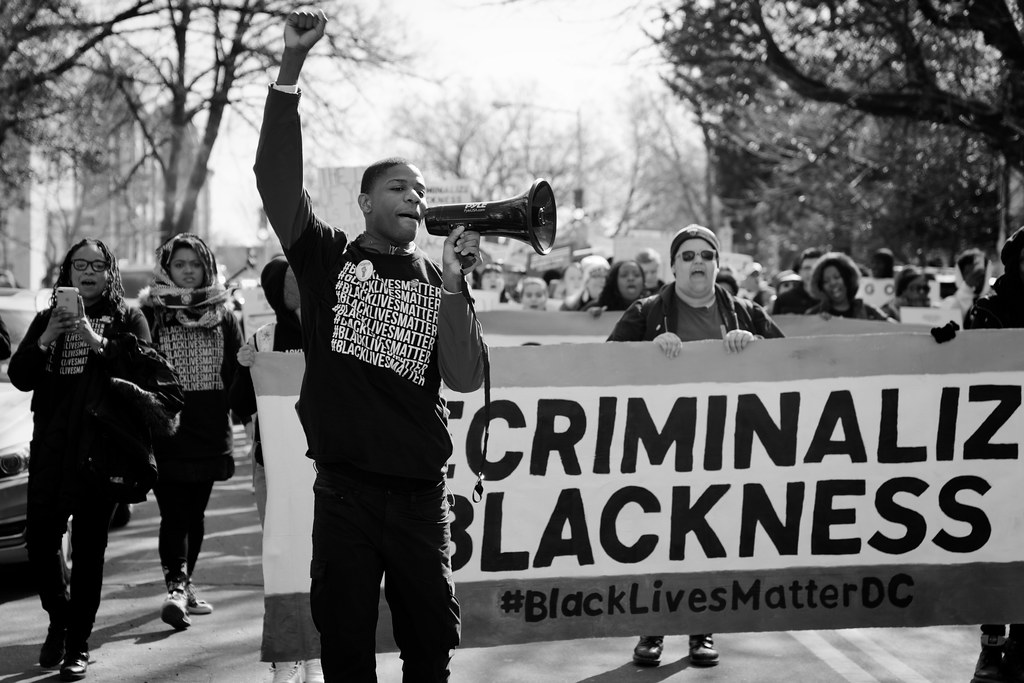
While the various dimensions of diversity discussed above are a start to understanding human diversity, they do not fully describe an individual, community, or population. Instead, we must consider that these dimensions do not exist independently of each other and that the interaction of these dimensions is referred to as intersectionality (Crenshaw, 1989). Intersectionality focuses on how the dimensions can overlap and give rise to different experiences as well as multiple privileges or inequities; for example, racial/ethnic and sexual minority men will experience more health disparities than white and/or heterosexual men. Community psychologists recognize the significance of intersectionality, but published research in this area is still lacking compared to other disciplines. “The urgency of intersectionality” video can help you learn more about intersectionality.
Privilege, or the unearned advantages that individuals have based on membership in a dominant group (e.g., race, gender, social class, sexual orientation, ability), contribute to the systems of oppression for non-privileged individuals and groups. While privilege can come in multiple forms and individuals can have multiple privileges, white privilege, or the advantages that white people have in society, are important for psychologists to examine more extensively to understand how white people participate in systems of oppression for racial minority groups in the US (Todd et al., 2014). For example, white experiences and perspectives tend to be pervasive in curriculum, policy, pedagogy, and practices (Suyemoto & Fox Tree, 2006) at the exclusion of work and research by people of color.
Janet Helms’ (1995) important work on the white racial identity model describes how white people move from a racist identity to a non-racist identity as they become more aware, move beyond an effective understanding of racial minorities to an experiential one, and understand their role in a racist society. Other community psychologists have explored how to create organizational contexts that are more inclusive and address white privilege (Bond, 1999) or have examined how white privilege influences commitment and interest toward social justice (Todd et al., 2014). While community psychologists are contributing to this research, more studies are needed to understand the relationship between identity, privilege, and social justice and action in community contexts.
Diversity in Practice
Using a framework of cultural humility, community psychologists consider context. This provides the ability to view various dimensions of diversity while considering the impacts of prejudice and discrimination. It is also important to consider how cultural practices differ in all settings in which the individual operates. Considering context expands the perspective of culture to include historical context, intersectionality of identities, and the experience of prejudice and discrimination.
The Society for Community Research and Action (SCRA) has identified sociocultural and cross-cultural competence as one of the 18 foundational principles of Community Psychology practice, and defines it as “the ability to value, integrate, and bridge multiple worldviews, cultures, and identities.” SCRA expands upon the importance of recognizing multiple contexts to integrate elements of cultural humility in practice settings. Prior to working in communities, it is important to examine one’s own worldview and consider how it interacts with the community through culture and power dynamics. It is important to recognize and articulate dynamics related to culture and power differentials with the communities in which community psychologists work. Due to the complexity of these dynamics, respecting diversity in practice may require the formation of relationships with various members of a community who may be able to serve as a guide for working with the community in culturally valid ways.
Diversity in Research
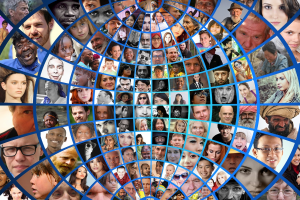
Adopting cultural humility is necessary for considering diversity in research. In research, it is important to consider how questions are asked or which samples are included in a study. In addition, the importance of topics of research to diverse communities must be considered, which may require developing research topics and questions with the populations that are being impacted. Participatory action research is a valuable tool for developing topics in an inclusive way and is a method frequently used by community psychologists to find solutions in the social environment (Kidd & Kral, 2005).
Research must also consider the power dynamics between the researcher and the community as well as the dynamics within the community. The use of culturally-anchored methodologies is important for exploring research questions in the appropriate context. Marginalized groups are often compared to a majority group, but these comparisons may not always acknowledge the implications of power dynamics present in such comparisons. When developing the methodology, it is important for the researcher to acknowledge one’s own cultural assumptions, experiences, and positions of power. Recognition of these aspects of self will lead to a more careful framing of the research question within context. Finally, it is important to consider where to disseminate research findings to reach wide audiences.
DESIGNING CULTURALLY-SITUATED COMMUNITY PROGRAMS

Designing programs in the community needs to start with an understanding of the diverse cultures and communities in which they will be situated. To that end, collaborative and ecological systems approaches used by community psychologists are incorporated throughout the design of community prevention and intervention programs. Altogether, these approaches situate culture at every level of planning a program from the conceptualization to the implementation. In Case Study 8.3, Trickett (2011) provides a cautionary example of what can happen when culture is not more deeply considered in community interventions.
Case Study 8.3
Water Boiling in a Peruvian Town
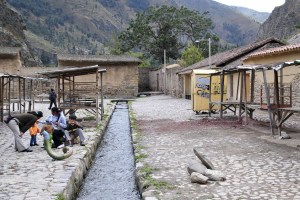
In “Water Boiling in a Peruvian Town” by Ed Wellin (1955; see Trickett, 2011), a three-year public health intervention was implemented to decrease the water-related health risks in Los Molinos, a rural Peruvian town. The promotion of the evidence-based practice of boiling water targeted women, with the assumption that increased knowledge about the health benefits of boiling water would persuade them to change. The intervention was delivered by a health worker who took up residence in Los Molinos and her goal was to have the women boil their water before using it. The intervention turned out to be unsuccessful—the majority of women did not start this practice, due to several factors steeped in cultural beliefs and local customs or conditions. For example, the cultural meanings of hot and cold in their culture meant that boiled water was used for certain health issues, but it was not associated with germs or diseases. Over time, boiled water was culturally linked to illness and very much disliked by the local people. The intervention’s impact was also further affected by the women’s inability to boil because of their daily routines, social ostracization for boiling because of the meanings of cold and hot water, and lack of interest in women’s lives by the gendered town’s leadership.
This case study demonstrates the significant impact of culture on well-intentioned and scientifically-based interventions meant to improve community health and well-being. For that reason, Trickett provides recommendations about how Community Psychology can contribute more to the understanding of culture in research and practice. Some of these recommendations include focusing on communities more than programs, understanding that choice is more important than change, working with local experts in the community, and using research designs and methods that are appropriate for diverse cultures and populations.
Another approach proposed by Resnicow and colleagues (1999) considers surface structure and deep structure for designing culturally-anchored community programs. Surface structure includes aspects of the program that are observable such as gender, race, and ethnicity of the staff members; setting; language(s) used; and choices of cultural components, such as music or food. Deep structure includes knowing the historical, social, and psychological aspects of the culture to understand core cultural values, beliefs, and practices. However, attending to both surface and deep structures will not guarantee the success of the program. Matching the race or ethnicity of the staff to program participants is not always enough to establish trust or resolve all cultural differences. Similarly, programs using deep structures may appeal differently to those with different acculturation statuses; therefore, more research is necessary to determine the effectiveness of these culturally anchored programs.
Overall, as our knowledge and work with diverse communities continues to expand, the culturally-situated and anchored approaches used by community psychologists will continue to be very important for designing programs. Central to this will be the evolving development of a cultural Community Psychology which incorporates theories and methods from cross-cultural and cultural psychology in research and practice (O’Donnell & Tharp, 2012).
SUMMING UP
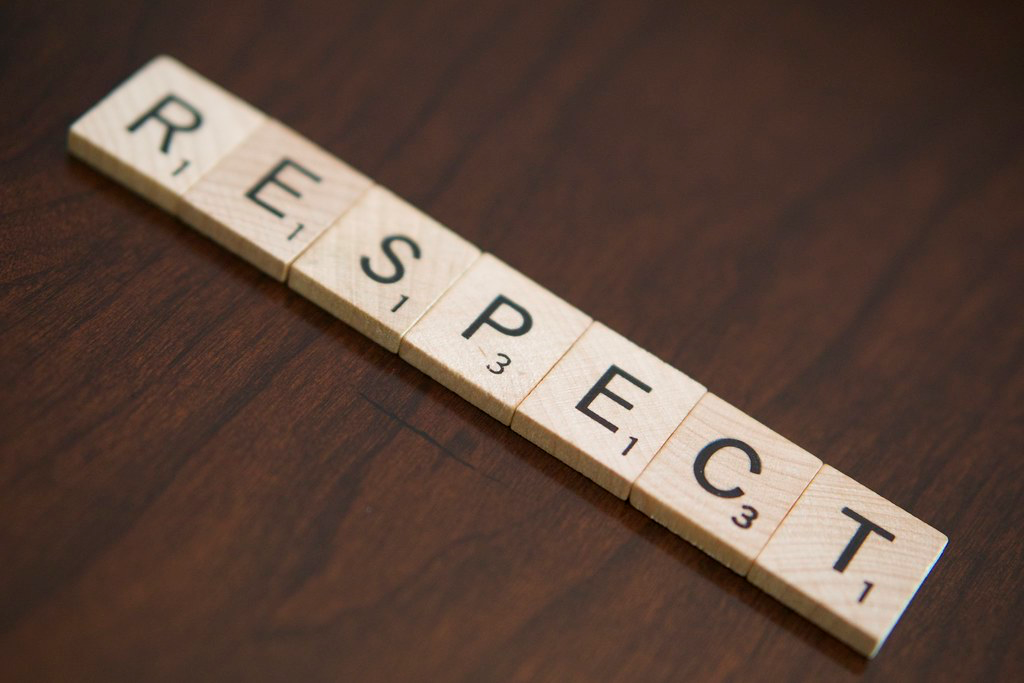
This chapter presented the framework of cultural humility as an ongoing approach to working with diverse communities. It is important to recognize various dimensions of diversity and how they intersect to produce unique experiences of inequity or privilege. Community psychologists go beyond traditional research and practice by working with members of marginalized groups to challenge oppression through participatory action research and to provide tools for empowerment and self-directed change.
Critical Thought Questions
- How would you explain the differences between cultural humility and cultural competence? Why is cultural humility more beneficial for understanding diversity?
- How do race and ethnicity differ? How is race socially constructed?
- What gender norms are present in today’s society? Would you say these gender norms are beneficial or not? Why?
- Why is it important to focus more research on the spectrum of sexual identities?
- Although disability involves a physical/biological reality, it is also a social construction. How is disability a social construction?
- What is intersectionality and how does it impact a person’s experiences?
- Why should the culture of a community be considered before designing community programs?
Take the Chapter 8 Quiz
View the Chapter 8 Lecture Slides
____________________________________________________________________
REFERENCES
Artiles, A. J., Kozleski, E. B., Trent, S. C., Osher, D., & Ortiz, A. (2010). Justifying and explaining disproportionality, 1968-2008: A critique of underlying views of culture. Exceptional Children, 76(3), 279-299. https://doi.org/10.1177/001440291007600303
Betancourt, H., & Lopez, S. R. (1993). The study of culture, ethnicity, and race in American psychology. American Psychologist, 48(6), 629-637.
Bond, M. A. (1999). Gender, race, and class in organizational contexts. American Journal of Community Psychology, 27(3), 327-355.
Cheng, S. T., & Heller, K. (2009). Global aging: Challenges for community psychology. American Journal of Community Psychology, 44, 161-173.
Cohen, A. B. (2009). Many forms of culture. American Psychologist, 64(3), 194-204.
Crenshaw, K. (1989). Demarginalizing the intersection of race and sex: A Black feminist critique of antidiscrimination doctrine, feminist theory and antiracist politics. The University of Chicago Legal Forum, 140, 139-168.
Flanders, C. E., Robinson, M., Legge, M. M., & Tarasoff, L. A. (2016). Negative identity experiences of bisexual and other non-monosexual people: A qualitative report. Journal of Gay & Lesbian Mental Health, 20(2), 152-172.
Goodley, D., & Lawthom, R. (2010). Epistemological journeys in participatory action research: Alliances between community psychology and disability studies. Disability & Society, 20(2), 135-151. https://doi.org/10.1080/09687590500059077
Helms, J. E. (1995). An update of Helms’ White and people of color racial identity models. In J. G. Ponterotto, J. M. Casas, L. A. Suzuki, & C. M Alexander (Eds.), Handbook of multicultural counseling (pp. 181-198). Sage.
Jason, L. A., Glantsman, O., O’Brien, J. F., & Ramian, K. N. (2019). Introduction to the field of Community Psychology. In L. A. Jason, O. Glantsman, J. F. O’Brien, & K. N. Ramian (Eds.), Introduction to Community Psychology: Becoming an agent of change. https://press.rebus.community/introductiontocommunitypsychology/chapter/intro -to-community-psychology/
Jason, L. A., Richman, J. A., Rademaker, A. W., Jordan, K. M., Plioplys, A. V., Taylor, R. R.,… Plioplys, S. (1999). A community-based study of chronic fatigue syndrome. Archives of internal medicine, 159(18), 2129-2137.
Kidd, S. A., & Kral, M. J. (2005). Practicing participatory action research. Journal of Counseling Psychology, 52(2), 187-195. https://doi.org/10.1037/0022-0167.52.2.187
Kosciw, J. G., Palmer, N. A., & Kull, R. M. (2015). Reflecting resiliency: Openness about sexual orientation and/or gender identity and its relationship to well-being and educational outcomes for LGBT students. American Journal of Community Psychology, 55, 167-178.
O’Donnell, C. R., & Tharp, R. G. (2012). Integrating cultural community psychology: Activity settings and the shared meanings of intersubjectivity. American Journal of Community Psychology, 49, 22-30.
Pinderhughes, E. (1989). Understanding race, ethnicity and power: The key to efficacy in clinical practice. Basic Books.
Resnicow, K., Braithwaite, R., Ahluwalia, J., & Baranowski, T. (1999). Cultural sensitivity in public health: Defined and demystified. Ethnicity & Disease, 9, 10-21.
Suyemoto, K. L., & Fox Tree, C. A. (2006). Building bridges across differences to meet social action goals: Being and creating allies among people of color. American Journal of Community Psychology, 37, 237-246.
Tarakeshwar, N., Stanton, J., & Pargament, K. I. (2003). Religion: An overlooked dimension in cross-cultural psychology. Journal of Cross-Cultural Psychology, 34, 377-394. https://journals.sagepub.com/doi/10.1177/0022022103034004001
Tervalon, M., & Murray-Garcia, J. (1998). Cultural humility versus cultural competence: A critical distinction in defining physician training outcomes in multicultural education. Journal of Health Care for the Poor and Underserved, 9(2), 117-125.
Todd, N. R., McConnell, E. A., & Suffrin, R. L. (2014). The role of attitudes toward white privilege and religious beliefs in predicting social justice interest and commitment. American Journal of Community Psychology, 53, 109-121.
Trickett, E. J. (2011). From “Water boiling in a Peruvian town” to “Letting them die”: Culture, community intervention, and the metabolic balance between patience and zeal. American Journal of Community Psychology, 47, 58-68.
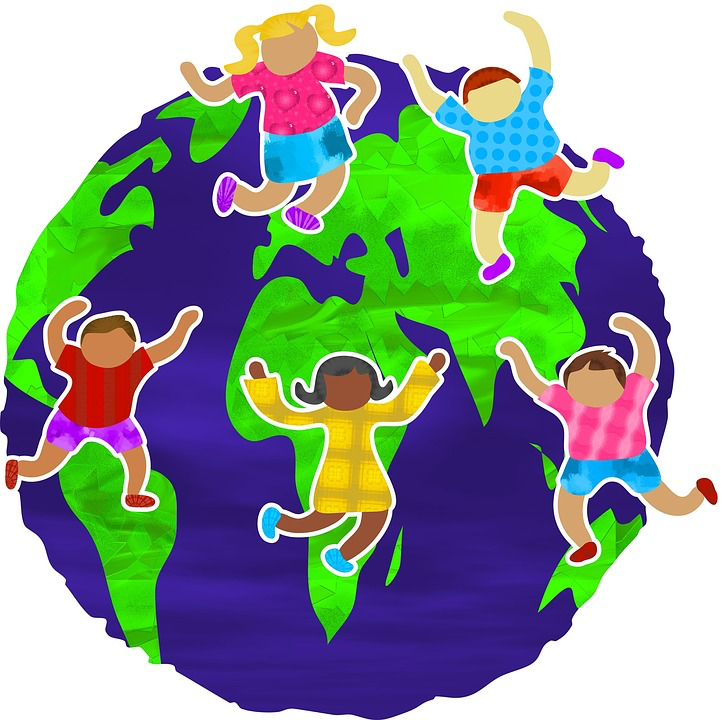
Acknowledgment, acceptance, and respect for the full range of human characteristics in their social, historical, and cultural contexts.
The surroundings, circumstances, environment, background, or settings which determine, specify, or clarify the meaning of an event or other occurrence.
Possessing the skills and knowledge necessary to effectively work with members of a culture.
Ongoing process of learning about other cultures and being sensitive to cultural differences. Cultural humility includes acknowledging one’s own lack of knowledge about aspects of culture and recognizing power dynamics that impact the relationship.
An intersectional approach takes into account the historical, environmental, socio-cultural, and political context and recognizes the unique experience of the individual based on the intersection and implications of all relevant grounds.
Dynamic concept of shared meanings and experiences that are passed down over time and generations. Culture includes shared beliefs, values, practices, definitions and other elements that are expressed through family socialization, formal schooling, shared language, social roles, and norms for feeling, thinking, and acting.
Social construct based on observable physical criteria, such as skin color or other physical features. Racial differences include economic, historical, and other social factors that contribute to a system of disadvantage and privilege.
One’s social identity based on culture of origin, ancestry, or affiliation with a cultural group.
A person’s status of belonging to a specific nation by birth or citizenship.
Socially-constructed perceptions of what it means to be male or female in our society and how those genders may be reflected and interpreted by society.
Biological descriptor involving chromosomes and internal/external reproductive organs.
The developmental changes and transitions that comes with being a child, adolescent, or adult.
Social construct based on a person’s income or material wealth, educational status, and/or occupational status.
A person’s emotional, romantic, erotic, and spiritual attractions toward another in relation to their own sex or gender.
A person’s inner psychological sense of being male, female, or another category.
A person’s external expression of being male, female, or other.
Visible or hidden and temporary or permanent conditions that provide barriers or challenges, and impact individuals of every age and social group.
Research that involves an exchange of resources and ideas between researchers and the community members as a way of understanding that is guided by community needs, also known as "participatory action research."
Shared systems of beliefs and values, symbols, feelings, actions, and experiences that often focus on relationships with the divine.
Focuses on an individual’s relationship with a higher power and a quest for meaning.
Unearned advantages that individuals have based on membership in a dominant group.

